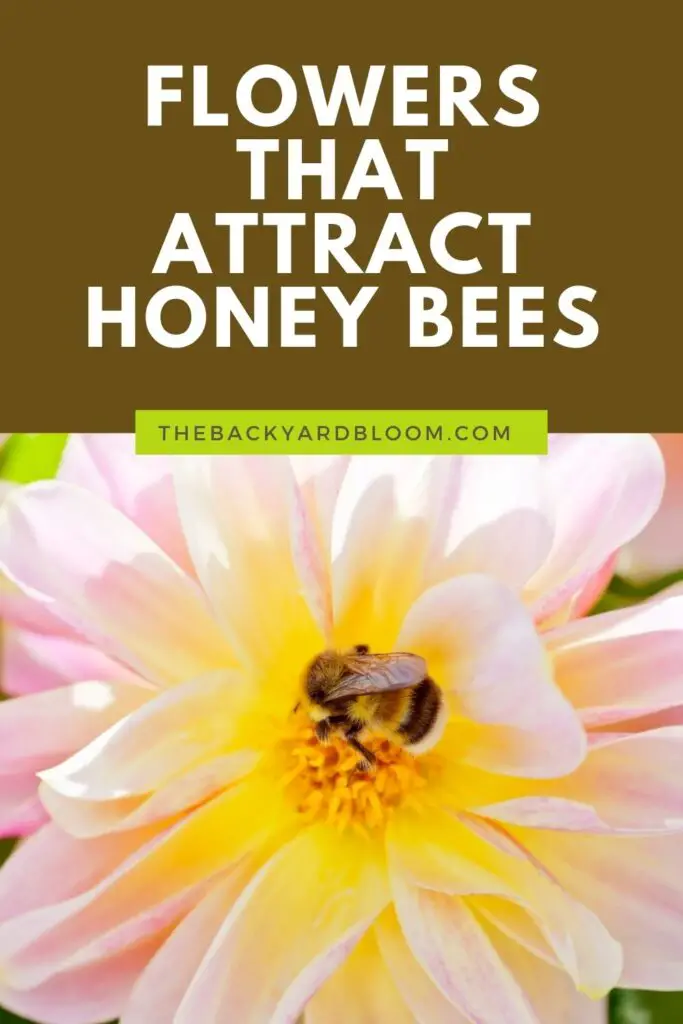Please note that this post may contain affiliate links. You can read my full affiliate disclosure at the bottom of the page.
Honey Bees and other beneficial bees are important for having a thriving garden. Bees are crucial not only for your garden but also for the planet. With honey bees and other insects suffering from a major decline, it’s important for any of us to provide whatever support we can, even if that is just providing a source of pollen. So if you want to know how to attract more honey bees to your vegetable garden then you are in luck. In this article, we go over flowers that attract honey bees.
Flowers You Can Plant That Attract Honey Bees
- Alyssum
- Agastache
- Aster
- Bee Balm
- Black-eyed Susan
- Borage
- Clover
- Cosmos
- Echinacea (Coneflower)
- Geranium
- Goldenrod
- Lavender
- Lupine
- Milkweed
- Nasturtium
- Pansies
- Peony
- Poppies
- Salvia
- Sedum
- Snapdragon
- Sunflowers
- Zinnia
Related Reading: Garden Plants That Attract Monarch Butterflies
Agastache has tall spires of flowers that attract honey bees easily.
Aster can grow up to 6 feet tall for some varieties or a short ground cover, it depends on the type that you get.. Each plant will have dozens of blooming flowers that are great for attracting bees to them. They are perennial plants that have blooms toward the end of the season when most others have lost their flowers. Aster flowers come in different colors: blue, pink, purple, and white.
Bee Balm is another perennial flower that you can plan to attract bees to your garden. In addition to attracting bees, it also attracts other pollinators like butterflies and hummingbirds. Bee Balm can grow up to 4 feet tall and has bright colored flowers that are a great source of nectar for pollinators. You can get bee balm in many different colors. It is a plant that can easily spread, so be careful where you plant it.
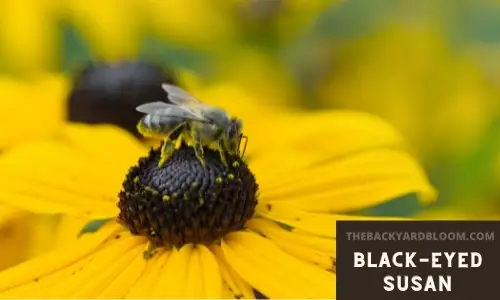
Black-eyed Susan are a perennial that is drought-resistant and is very common to see growing in the Midwest. These flowers bring in bees, butterflies, and hummingbirds.
Borage is a popular plant in the garden and it is often used in companion planting. It is well known for it’s ability to attract pollinators with it’s blue star shaped flowers.
Cosmos are found naturally in North America. They grow well in hot and dry climates and will attract bees, butterflies and hummingbirds.
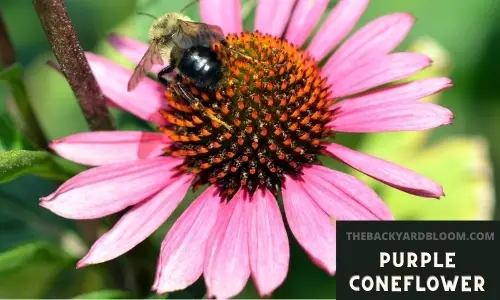
Echinacea (Coneflower) blooms during the midsummer and is another flower that is drought tolerant. They are also deer resistant if deer are an issue in your area. Another great bonus is that you can leave them over the winter to let birds eat the coneflower seeds. Coneflowers will attract all kinds of pollinators to your garden. Another great thing about coneflowers is that you can use them in companion planting. Coneflowers make great companion plants for many of the crops in your garden.
Goldenrod is often mistaken as ragweed, as they also have bright yellow flowers. But this is not the flower that is responsible for ragweed allergies. Goldenrod is a late bloomer and is a great addition to a garden to attract pollinators.
Lavender is an herb and a flower that is known for its wonderful fragrance and beautiful purple blooms. Bees love this plant, and it is one of the reasons that lavender is common as a companion plant for certain crops in the garden.
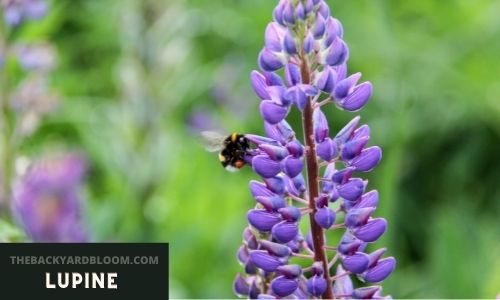
Lupine is a fast-growing flower that is available in both perennial and annual. They do best when planted in the springtime. If you are growing lupine from seed and it’s perennial, you will likely not get flowers until the second year.
Milkweed is a very popular flower that is used to help attract butterflies, but it also works for honey bees too. It is also called Butterfly Weed.
Pansies are a very popular flower not only in gardens but as a porch accent. They prefer partial sunlight and temperatures that are color. These flowers do great in both the garden and in containers. These are an annual, so you will have to replant these each year.
Peony is another perennial that pollinators love. These do take a few years until they produce the maximum amount of blooms. Peony plants prefer a sunny area with well draining soil.
Salvia are known for their clusters of bright colored flowers. They bloom in the summer and also in the fall. All pollinators seem to love this flowering plant. Salvia is a drought-resistant plant and it also has the benefit of being low maintenance.
Sedum (Stonecrop) flowers bloom for a long time and can also change color as time goes by. They prefer an area that has lots of sun and can tolerate poor quality soil if necessary.
Snapdragon is a flower that blooms during the cooler part of the growing season. They bloom first during the early spring and again later in the fall. Their flower shape also brings in hummingbirds.
Sunflowers are great for attracting pollinators during the late summer and early fall. They are popular for their large and bright colored flowers that come in various shades of yellow and orange. Sunflowers are also used as a companion plant for many vegetable garden crops.
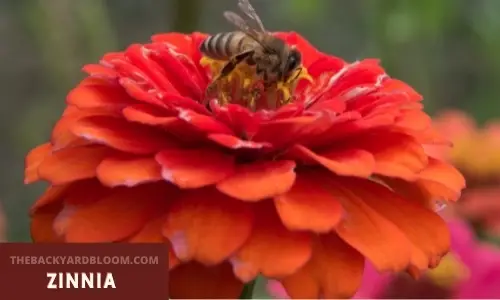
Zinnia is a very easy to grow annual flower. They are known for their bright color and for attracting bees to the garden. They are easily grown from seed and don’t require too much care.
